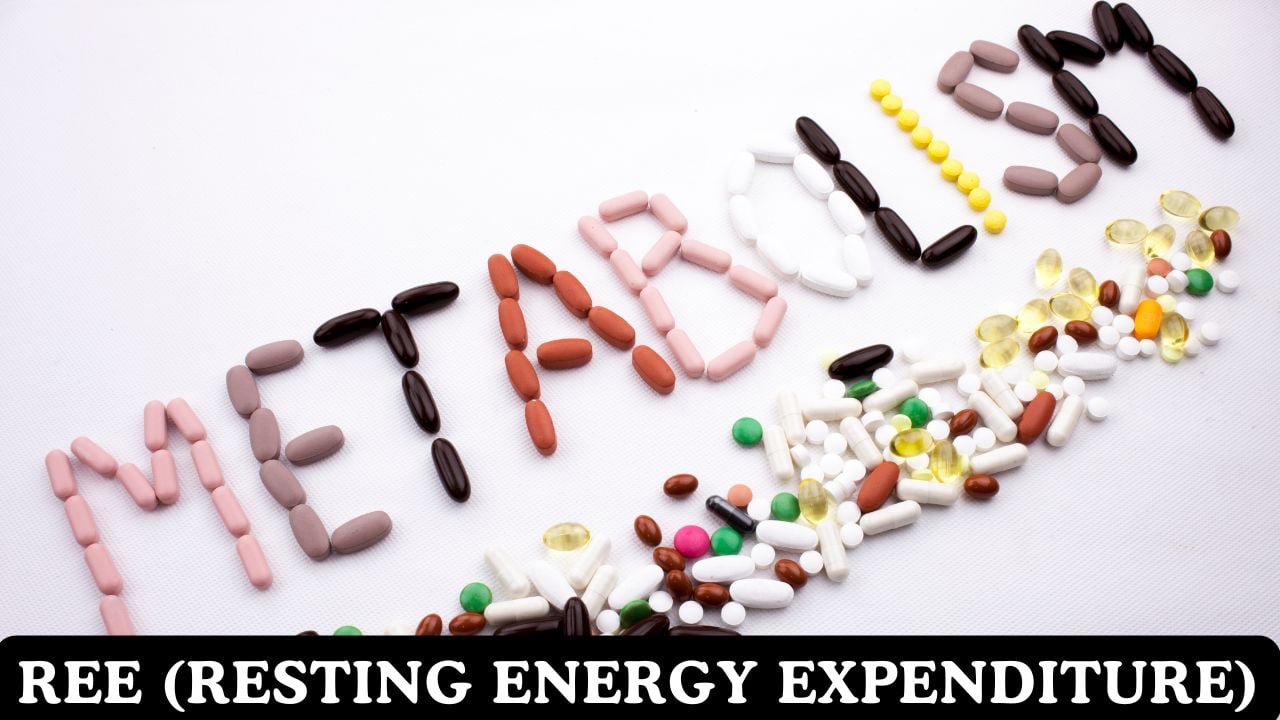REE Calculator – Resting Energy Expenditure
Calculate your Resting Energy Expenditure (REE) and Total Energy Expenditure (TEE) using scientifically validated equations. REE represents the minimum energy required for vital physiological functions at rest, including cellular maintenance, protein synthesis, and organ function – typically 60-75% of total daily energy needs.

What is Resting Energy Expenditure?
Understanding REE Fundamentals
Resting Energy Expenditure (REE) represents the minimum amount of energy required to maintain vital physiological functions while at rest in a neutral environment. According to the National Academy of Sciences, REE typically accounts for 60-70% of total daily energy expenditure in sedentary individuals and encompasses energy needed for cellular maintenance, protein synthesis, ion transport, and organ function.
REE differs from Basal Metabolic Rate (BMR) in measurement conditions, with REE being measured under less restrictive circumstances making it more practical for clinical and fitness applications. The terms are often used interchangeably in scientific literature, with REE values typically 10-15% higher than BMR due to less stringent fasting and activity requirements.
Total Energy Expenditure Components
Total Energy Expenditure (TEE) comprises three core components as outlined in dietary reference research. REE represents the largest component (60-75%), followed by physical activity which includes both planned exercise and non-exercise activity thermogenesis (NEAT), and the thermic effect of food (TEF) representing 8-10% of total expenditure.
Understanding these components is crucial for accurate energy balance calculations. Physical activity levels vary significantly between individuals and can range from 15-30% of TEE depending on lifestyle and exercise habits. For comprehensive metabolic assessment, combine REE calculations with our TDEE calculator and BMR calculator for complete energy expenditure analysis.
Factors Affecting REE
Multiple physiological and environmental factors affect REE including body size and composition, age, biological sex, genetics, hormonal status, and environmental temperature. Recent research demonstrates that fat-free mass is the strongest predictor of REE, explaining 60-70% of inter-individual variation.
Age-related changes in REE follow a distinctive pattern with rapid increases during infancy and childhood, stabilization during adulthood (20-60 years), and gradual decline in older adults. Sex differences in REE primarily reflect differences in body composition, with males typically having 10-15% higher REE due to greater muscle mass and lower body fat percentage.
Clinical and Practical Applications
REE calculations serve as the foundation for nutritional counseling, weight management programs, and athletic performance optimization. Healthcare providers use REE assessments to establish appropriate caloric intake recommendations, monitor metabolic health, and design therapeutic interventions for various conditions including obesity, diabetes, and eating disorders.
For athletes and active individuals, accurate REE assessment prevents underfueling which can lead to decreased performance, increased injury risk, hormonal disruptions, and compromised recovery. Monitor your energy balance with our macro calculator and track nutritional needs using our protein intake calculator for optimal health and performance outcomes.
REE Prediction Equations – Scientific Validation & Accuracy
Clinical Applications & Professional Practice
Weight Management and Obesity Treatment
REE assessment forms the cornerstone of evidence-based weight management interventions. Healthcare providers use REE calculations to establish appropriate caloric targets for weight loss, maintenance, or gain, ensuring interventions are physiologically sound and sustainable. Understanding individual REE helps prevent metabolic adaptation and supports long-term weight management success.
Clinical studies demonstrate that individuals with accurate REE knowledge achieve better adherence to nutritional interventions and maintain weight loss more effectively. For comprehensive weight management, combine REE assessment with our weight loss percentage calculator and ideal weight calculator for personalized goal setting.
Athletic Performance and Sports Nutrition
Sports nutritionists rely on accurate REE assessments to optimize athletic performance and recovery. Underfueling relative to REE can lead to decreased performance, increased injury risk, hormonal disruptions, and compromised recovery. Elite athletes often require 2-4 times their REE in total daily energy intake depending on training demands and body composition goals.
Research shows that athletes with optimized energy availability (adequate intake relative to expenditure) demonstrate superior training adaptations, reduced injury rates, and enhanced competitive performance. Support athletic nutrition planning with our carbohydrate intake calculator and creatine intake calculator for comprehensive performance nutrition strategies.
Clinical Nutrition and Medical Therapy
REE assessment is essential for medical nutrition therapy in patients with metabolic disorders, chronic diseases, and during recovery from illness or surgery. Accurate energy requirement calculations help prevent malnutrition, support healing processes, and optimize therapeutic outcomes in clinical settings including intensive care, rehabilitation, and outpatient care.
Healthcare teams use REE data to adjust nutritional support protocols, monitor metabolic health, and evaluate treatment effectiveness. Specialized populations including elderly, pediatric, and critically ill patients may require modified assessment approaches and careful monitoring of energy balance to ensure optimal clinical outcomes and recovery trajectories.
Research and Population Health Studies
REE measurements and predictions play crucial roles in epidemiological research, clinical trials, and population health studies. Researchers use REE data to investigate relationships between metabolism, disease risk, aging, and environmental factors, contributing to our understanding of human energy metabolism and its implications for public health policy.
Large-scale studies examining REE across diverse populations help identify metabolic risk factors, validate prediction equations, and develop targeted interventions for metabolic health improvement. This research informs dietary guidelines, clinical protocols, and precision nutrition approaches that benefit individual and population health outcomes.
